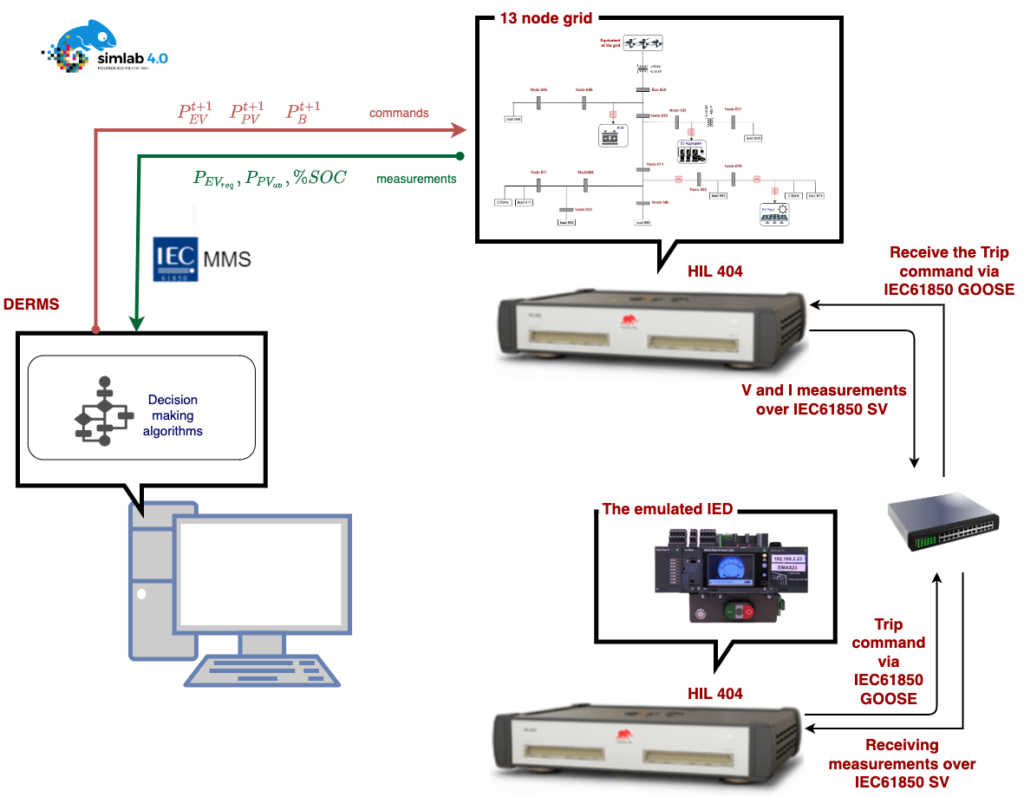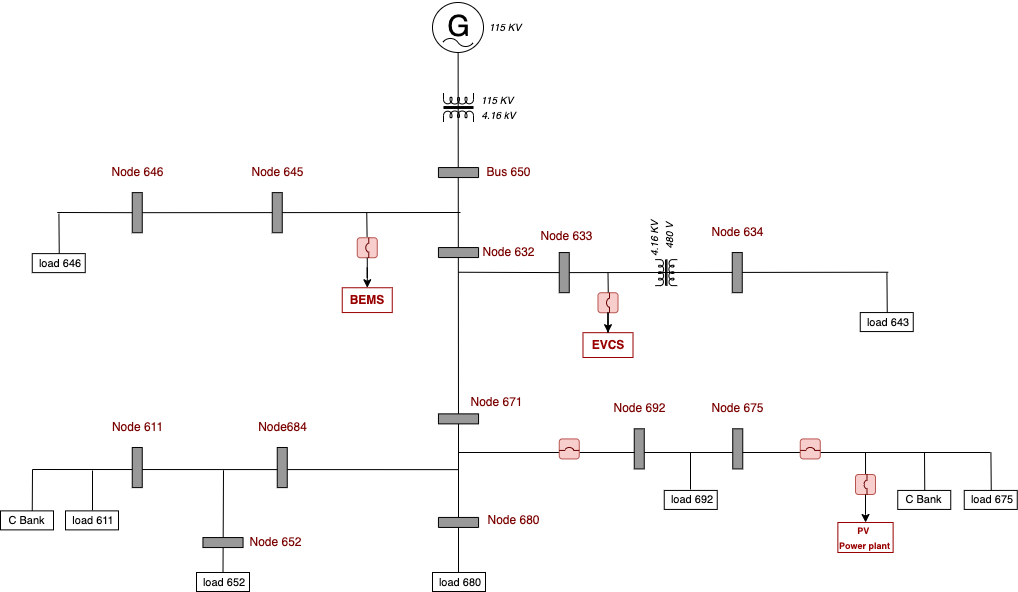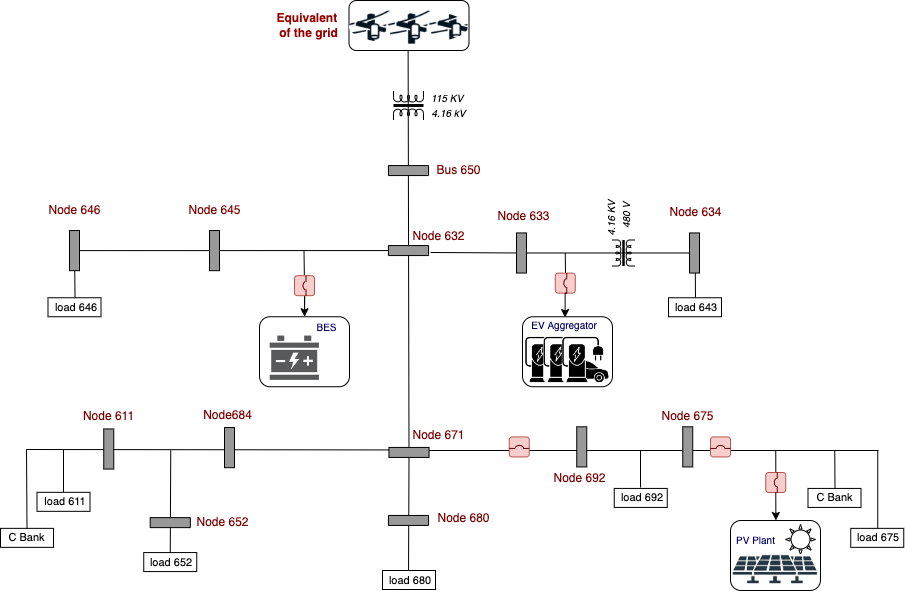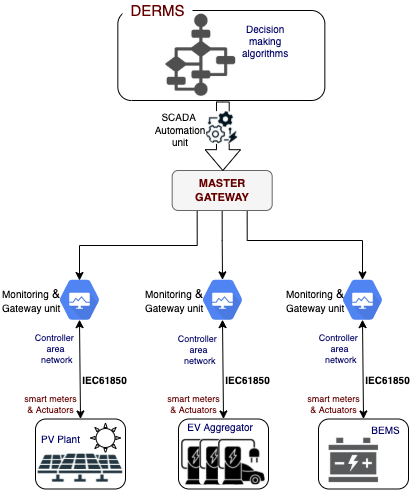Distributed Energy Resources Management System (DERMS)
Given that the management systems are one of the key factors in optimal control of power converters connected to the grid, this activity presents a distributed energy resource management system for the created smart grid connected with Photovoltaics, Battery energy storage, and an Electric vehicle aggregator. This study uses the unbalanced IEEE-13 node system with added RES and includes the communication architecture necessary for realizing the information flow between the individual control of the distributed generators and the master supervisory control algorithm. Two main facets were taken into account in this activity:
- Designing a control strategy for energy management and validating it with the grid in real-time Hardware-in-the-loop simulation integrating the IEC61850 communication layer and physical Intelligent Electronic Devices connected to the grid.
- The Fuzzy algorithm used to manage the energy consumption of the microgrid from the external grid. The algorithm is designed to minimize the power injection from the external grid during 24-hour according to data gathered on the daily electricity load profile and solar photovoltaic (PV) and EV aggregator profile.
- It is a master control that determines the reference power for BES, aggregated EV, and PV system. It also regulates the SOC of BES. In BES, the power flow is bidirectional to charge and discharge the batteries, whereas, in the case of PV and EV aggregator, power flow is unidirectional only with the generation and consumption respectively. Once the DERMS issues the reference power, the respective local controllers will ensure the power injection at the set rate from DER in the specified direction by maintaining the balance between generation and demand of power.
- Analyzing the vulnerabilities of the designed methodology for cyber security threats, explicitly with the extension of IEC61850 to Electric vehicle aggregators for communication with the master energy management. Different scenarios of cyber-attacks in the supervisory communication layer are conducted manipulating the controlling parameters issued by DERMS and monitoring parameters read from the grid by DERMS to investigate the effects of such an attack on the performance and operation of the Smart electric grid.
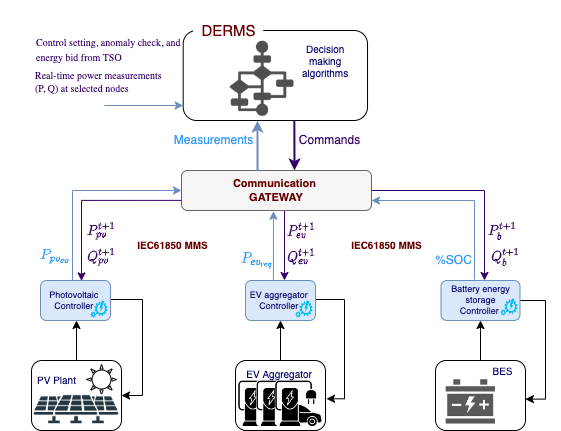
Results:
- The DERMS control system using membership functions designed by expertise that proved to be effective to control the reference powers in real time, yet difficult to design and modify as the main parameters of the grid changes.
- As a suggested countermeasure, some linear optimization algorithms are under investigation to be used to improve the functionality in any given platform without using complicated setups.
